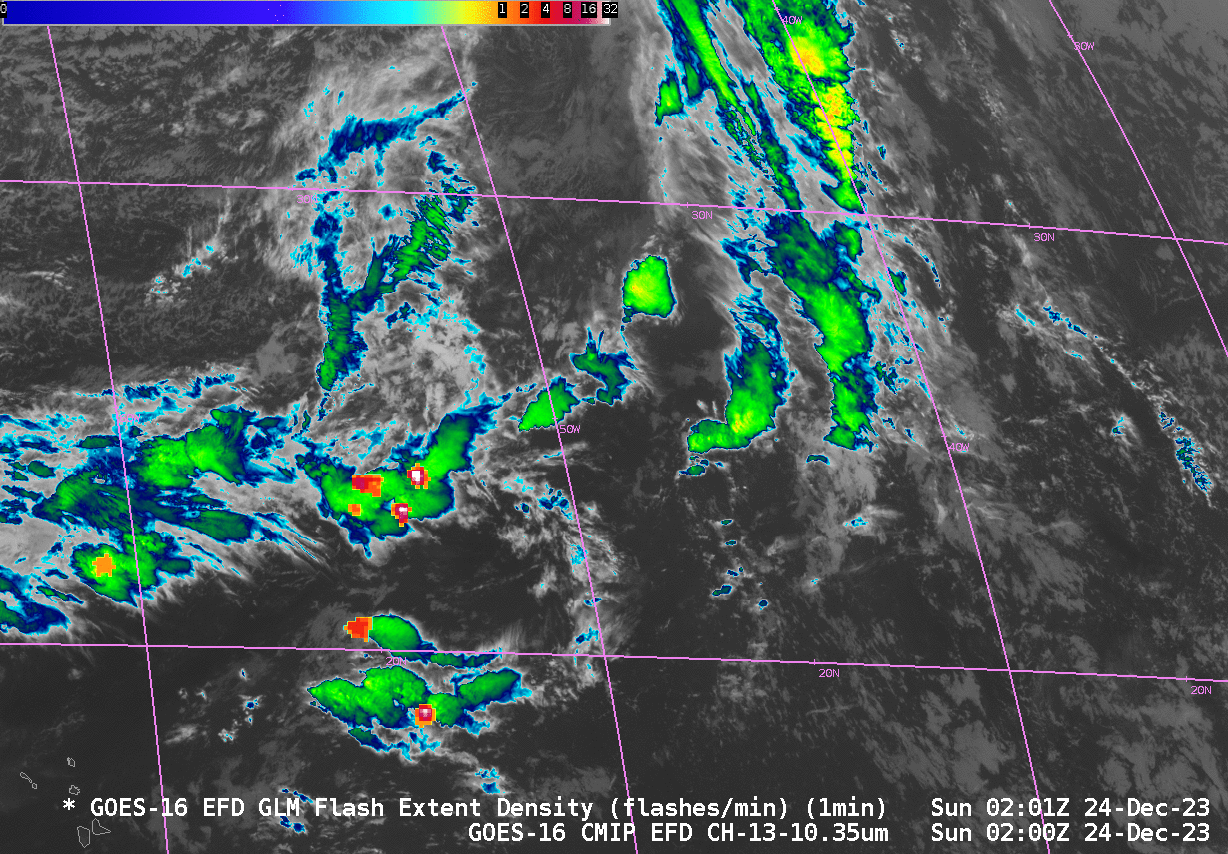Satellite signals of Turbulence on a Barbados to Manchester flight
Turbulence early on 24 December on a flight (Airbus A-300) from Barbados to Manchester (Scotland) led to a diversion (to Bermuda) and hospitalization (albeit with non-life-threatening injuries) of about a dozen passengers. The graphic below shows the path of the flight with data taken from FlightAware.com. The green parts of the plotted path (that is, the first and last hours) come from observations, the white part of the path, including the region through convection is extrapolated. News articles on this event state (link, link, link) that turbulence occurred between 2 and 2-1/2 hours after take-off.
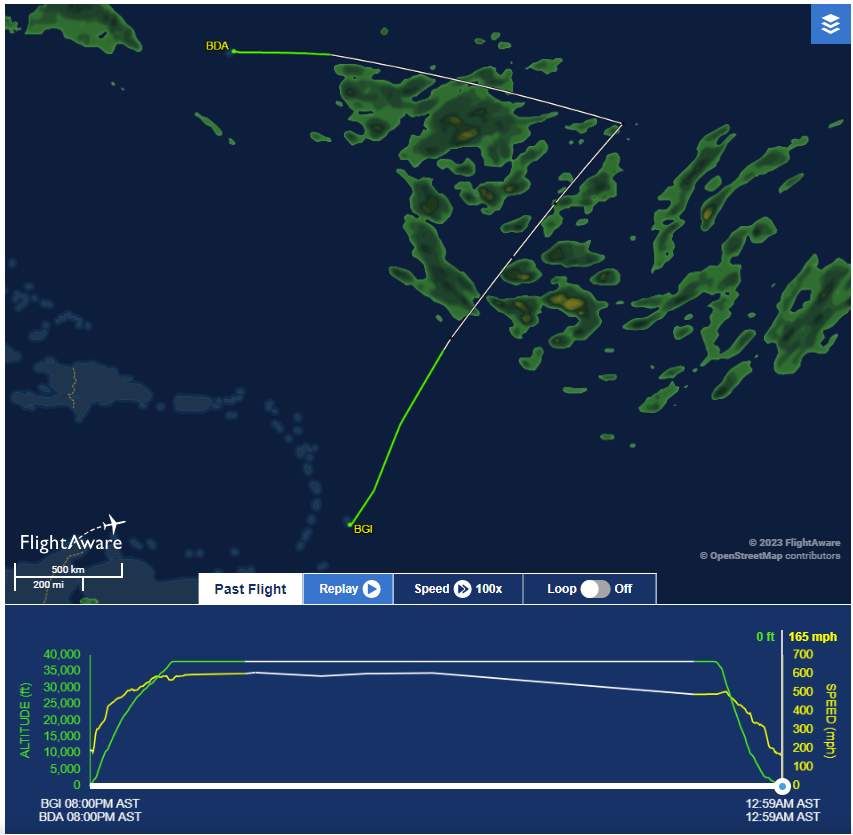
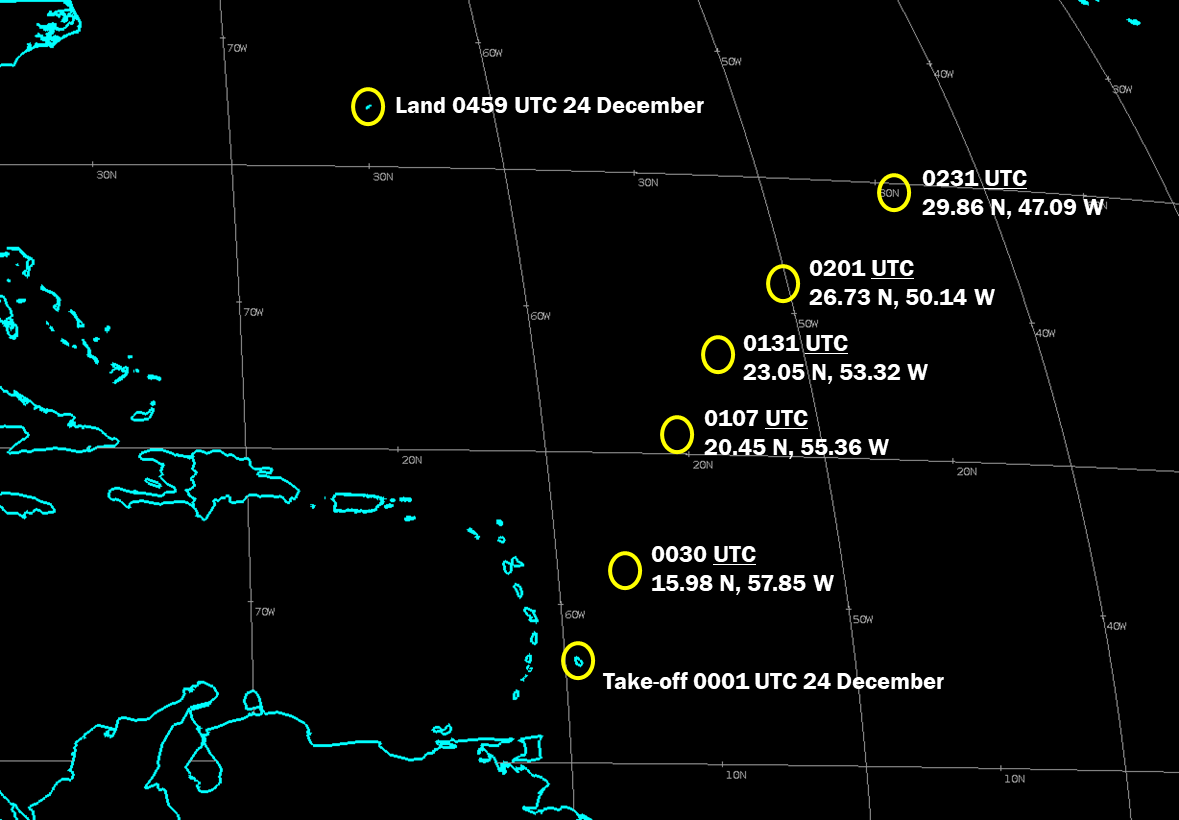
GOES-16 Clean Window infrared (Band 13, 10.3 µm) imagery, below, shows active convection in the region where the turbulence was observed between 0200 and 0230 UTC.

Upper-level water vapor (GOES-16 Band 8) imagery, below, also shows the convection in the region where turbulence occurred. (Click here to view low-level water vapor — GOES-16 Band 10 — imagery)
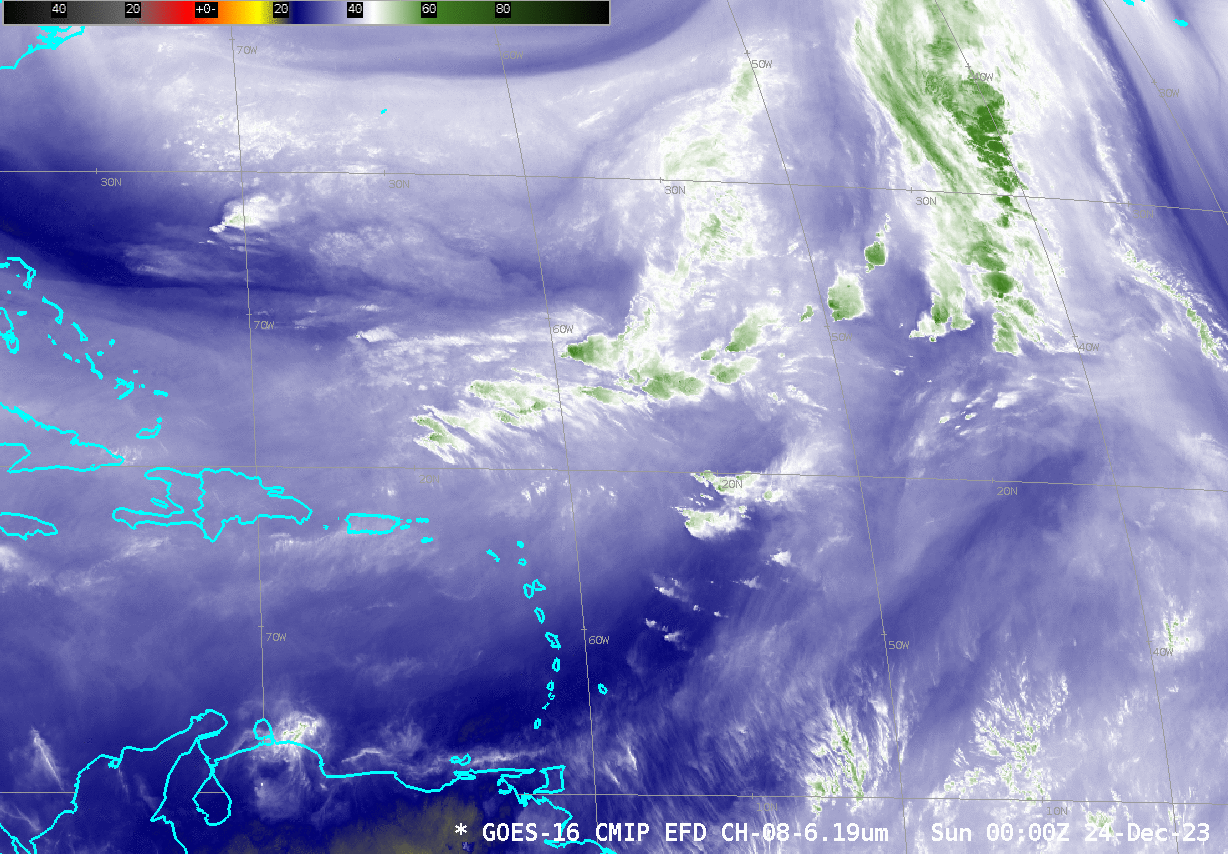
The CIMSS Turbulence product is a Machine-Learning tool that relates GOES-R imagery (and GFS estimates of lapse rates) to the probability of Moderate or Greater (MOG) turbulence. It is available online here, and is also available via an LDM feed for AWIPS. What did this product show during this event? That is shown below in an animation from 0140 to 0250 UTC on 24 December 2023. The turbulence was observed between 0200 and 0230 UTC to the south of 30oN — the latitude of northern Florida — and between 47oW and 50oW. Click here to see an annotated image from 0220 UTC.
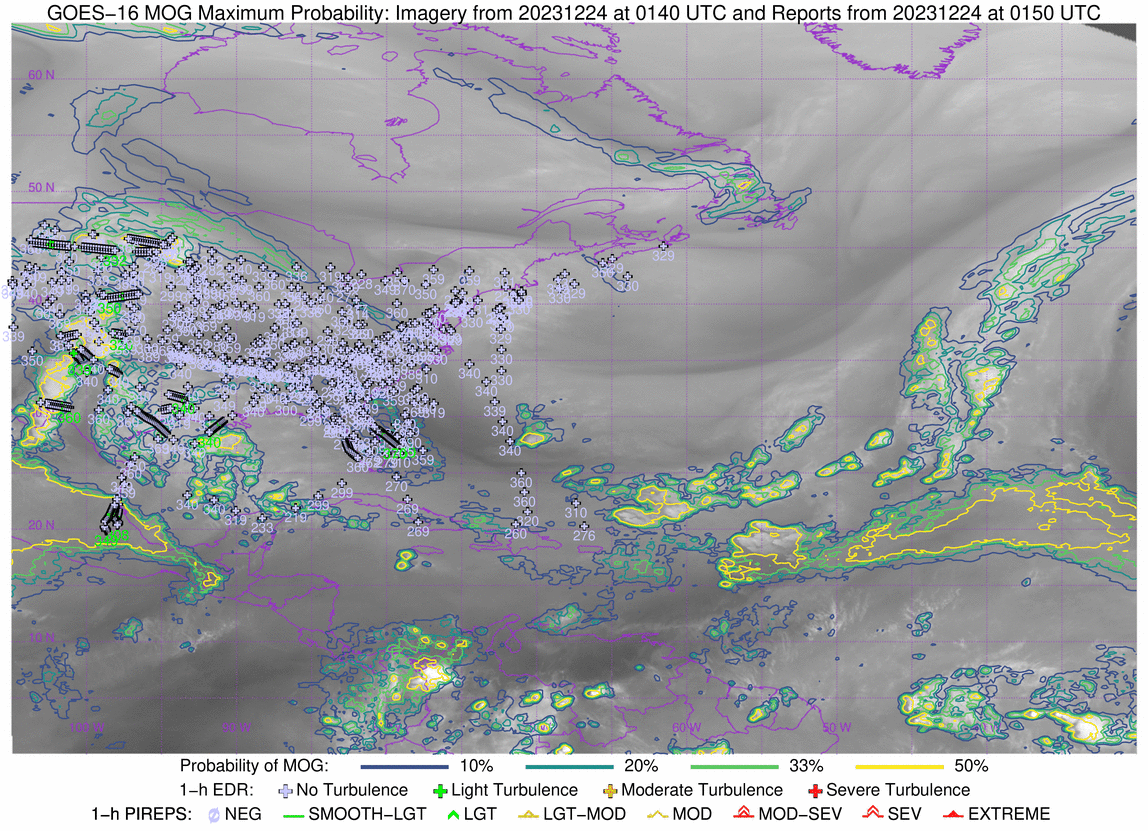
The plane was traversing a region where Turbulence Probability was large in places. Without a precise knowledge of where/when turbulence occurred, it’s a challenge to assess precisely how well the product performed for this event.
Perhaps GLM observations could help identify the convective feature that might have caused the convection. GLM observations between 0200 and 0240 UTC, below, bracket the reported time of the convection. If the turbulence is associated with convection, perhaps the cell near 28oN, 48oW, strong enough after all to produce lightning, was responsible.
